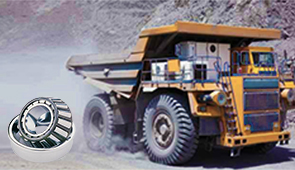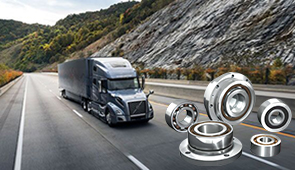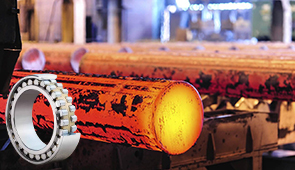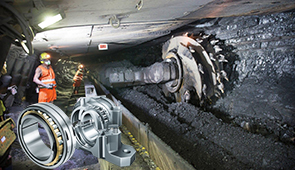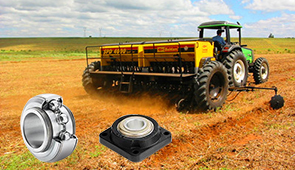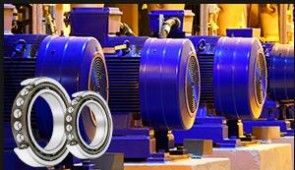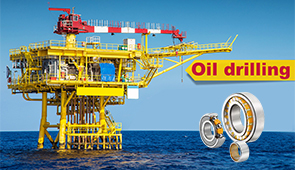Grease vs Lubricant: Understanding the Differences and Applications
When it comes to maintaining and ensuring the longevity of machinery, the type of substance used to reduce friction and wear is paramount. Two of the most commonly used substances are grease and lubricant, but these terms are often misunderstood or used interchangeably. This article dives into the critical distinctions between grease and lubricant, exploring their unique properties, advantages, and ideal applications. Whether you’re managing industrial equipment, automotive systems, or household tools, understanding when and how to use these materials can have a significant impact on performance, efficiency, and durability.
What is Grease?
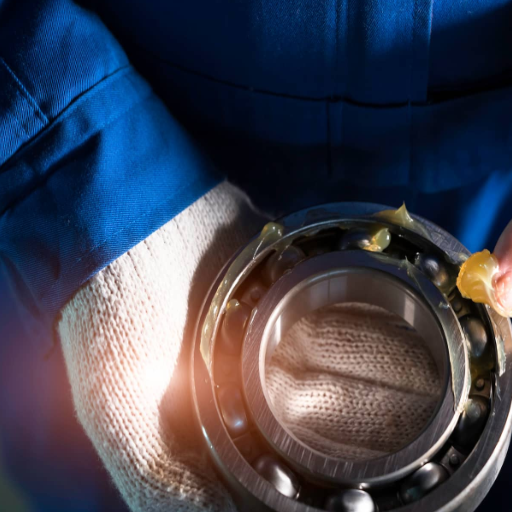
Composition of Grease
Greases consist of three main components: a base or working oil, a thickener, and additives. The base oil forms the major part of the grease (70-90% by weight) and is hence the lubricating medium. Mineral, synthetic, or even bio-based oils can be used for grease purposes, and the specific type affects temperature ranges and some performance features of the grease.
The thickener gives structure and a semi-solid body to the grease. The more common metallic soaps employed include complexes of lithium, calcium, or aluminum. Alternative substances would be clay and polyurea. These thickeners ensure the grease has mechanical stability and possesses the necessary water and high-temperature resistance properties.
Additives go in to enhance particular properties of the grease. Depending on the application, such additives would be anti-wear agents, corrosion inhibitors, oxidation inhibitors, and extreme pressure (EP) additives. They enhance the durability of the grease and ensure its good performance under severe conditions, such as under high loads, moisture presence, or an extended period of exposure to heat. These three components thus work in tandem to cater to the lubrication requirements of varying machines and environments.
Physical Properties of Grease
The grease’s physical properties are indicative of its application under ambient and other operating conditions considered. Consistency is one such property. It is the measure of thickness or stiffness, with ASTM D217 penetration being the most common method of measurement. The NLGI system rates grease consistency with numerical values between 000 (most fluid) and 6 (most solid). This property ensures that the grease will stay put under working conditions and perform its lubricant role effectively.
Another essential physical property is its dropping point, which defines the temperature at which grease begins the process of becoming liquid, i.e., melting from its semi-solid state. Dropping point values serve as an indication of the thermal stability of grease, showing whether it will be able to carry on as a semi-solid and provide lubricating properties even at extreme temperatures.
Water resistance is significant for applications prone to solvent environments or moisture. Performance in this area is usually evaluated using water washout or water spray-off tests such as ASTM D1264 or ASTM D4049. A highly water-resistant grease would help ensure proper function by protecting metal surfaces from corrosion and allowing lubrication to continue in the presence of water. These properties, along with others, specify how well the grease performs in an operational environment within the scope of different industrial and mechanical applications.
Applications of Grease in Industries
The grease prevents friction in any industrial exercise wherein it has been employed to prevent wear, rust, or corrosion, as well as to increase the reliability of equipment under various operating conditions.
- Automotive Industry: In the automotive industry, greases find use in various components such as wheel bearings, chassis joints, and universal joints. Lithium greases are well appreciated, given their excellent resistance to thermal and water conditions. Research suggests that when bearing grease of good quality is used, wear can be cut down by 50% under heavy load conditions, thereby directly contributing to improvements in vehicle performance and durability.
- Mining and Construction Equipment: In mining operations and construction activities, equipment like excavators, loaders, and crushers gets subjected to very high pressures from adverse environmental conditions such as dirt, water, and vibration. Calcium sulfonate greases are generally applied because of their great load-carrying ability and anti-corrosion properties. With mine greases characterized by a high load wear index per ASTM D2596, downtimes of mechanical equipment are cited to have lessened by 20-30%.
- Food Processing Industry: Greases used in this industry must possess safety characteristics such as an NSF H1 classification for incidental food contact. Food-grade greases with aluminum complex thickener and synthetic base oils lubricate equipment while meeting safety requirements.
- Steel Industry: Steel-making occurs at extreme temperatures under high loads, requiring high-temperature greases for applications such as continuous casting bearings and operations of hot rolling mills. Polyurea greases of the conventional type exhibit extremely good thermal stability, with operational temperature ranges above 300°F (150°C), to consistently perform under such punishing conditions.
- Energy Sector (Wind Turbines and Power Plants): Grease is used for the smooth operation of wind turbines, gearboxes, and turbines in power plants. These greases are fibrous lithium complexes and synthetic oils that, due to their low temperature adaptability and high oxidation resistance, are most appropriate for such applications. Modern greases for wind turbine bearings hold the promise of enhancing maintenance intervals from six months to over one year, thereby decreasing overall operational costs.
These varied applications reflect the need to select the right grease formulation for the specific operational requirements in order to ensure machinery efficiency, limit downtimes, and maximize productivity in every industrial sector.
What is a Lubricant?

Types of Lubricants
Lubricants are classified into four general types depending on their composition and use: liquid (oil-based), semi-solid (greases), solid, and synthetic.
- Liquid Lubricants: These are basically oil-based lubricants, mineral oils being those derived from nature, whereas synthetic oils are artificially derived. They work best for high-speed applications such as automotive engines, turbines, or hydraulic systems since they flow freely and provide lubrication between moving surfaces. The newer variants have chemical additives such as anti-wear, viscosity, and detergent aids to increase performance even in very adverse working conditions.
- Semi-Solid Lubricants (Greases): Greases consist essentially of base oil, thickener, and other additives to enhance performance characteristics. They are good applications where the lubricant must remain in its position for long periods, such as bearings and joints, particularly where reapplication could be more difficult. Lithium greases are still very prominent; however, newer calcium sulfonate and polyurea greases have augmented load-carrying capabilities, water resistance, and thermal stability greatly.
- Solid Lubricants: Solid lubricants like graphite, molybdenum disulfide, and PTFE are generally used in extreme environments where liquid or semisolid lubricants would fail to work-mostly high vacuums, high temperatures, and heavy loads. These materials reduce friction by creating low-shear-strength surface films.
- Synthetic Lubricants: Formulated from chemical compounds such as polyalphaolefins (PAOs) and esters, synthetic lubricants are thermally more stable, less volatile, and able to perform consistently over a wider temperature range. With longer life and much greater oxidation resistance, they are essential for jet engines, industrial compressors, and state-of-the-art robotics.
Each group of lubricants has been designed to address specific requirements for optimum machinery performance without wasting energy or wear. Choosing the right type of lubrication is the recipe for doing efficient work and reliable operation in modern industrial and mechanical systems.
Physical Properties of Oil Lubricants
Oil lubricants possess myriad physical properties, many of which are necessary for their performance and fit-for-specific-application nature. However, viscosity, thermal stability, density, and flash point are essential. These properties govern the behavior of the lubricant and its efficiency under operational stresses.
- Viscosity: It may be the most important property of oil lubricants, describing the internal resistance to flow. It directly controls the film thickness, the load that the film can bear, and energy losses due to friction. An interrelated term is that of viscosity index (VI), which expresses how much the viscosity of an oil changes with temperature. Oils with higher values of VI are often used in extreme conditions because they perform consistently over a large temperature range.
- Thermal Stability: The ability to resist decomposition at high temperatures is vital for functions lasting a long time. Intense operating temperature conditions can be well maintained as far as lubrication is concerned by oils of high thermal stability, hindering sludge formation and mechanical degradation.
- Density and Specific Gravity: They affect the lubricants’ mass-to-volume ratio as well as flow characteristics. Oils of a greater density could perform best in some given pressures and operational demands, but would have to be chosen in view of the system dynamics.
- Flash Point: This is the lowest temperature of the oil vapor at which it ignites momentarily in the presence of ignition. It is among the important safety factors. A lubricant with a higher flash point normally tends to be safer and more suitable for operations at high temperatures.
With these physical properties precisely engineered, modern oil lubricants are capable of addressing all industry needs, from automotive lubrication to those involved in far advanced aerospace applications. Knowledge about these properties is a prerequisite to selecting the right lubricant that will maximize performance and system life.
Applications of Lubricants in Various Sectors
Lubricants, among their myriad fields of application, are essential for industries wherein they provide protection and build efficiency. Below is an exhaustive list of five major sectors where lubricants are applied, along with the description of their roles and contributions:
- Automotive industry: Although lubricants reduce friction and wear on engines, gears, and other moving parts, the best motor oils being used for fuel efficiency and reduced emissions may extend engine life. Synthetic oils reportedly can get you up to a 2% fuel economy gain; they maintain thermal stability in harsh conditions.
- Aerospace industry: Aerospace lubricants must function under extreme temperatures and pressures. Aircraft engines, actuators, and landing gear systems require synthetic lubricants and greases to maintain friction reduction and system integrity over a temperature range from -65°F to over 500°F, applicable to both the subsonic and supersonic.
- Manufacturing and Industrial Machinery: Lubricants, Industrial-grade lubricants are used to make sure heavy machinery- compressors, hydraulic systems, and bearings work smoothly and well. Studies show that lubrication of industrial machines can reduce energy consumption by 10–15% and would drastically cut down maintenance costs.
- Energy Sector: Lubricants are needed to keep extraction equipment functioning in oil plants, wind turbines, and power plants. Gear oils for wind turbines must have an excellent reputation for durability and resistance to oxidation so that the turbine can run smoothly in a remote location. It is truly the high-grade lubricants that reduce the downtime of the equipment, leading to increased energy output.
- Food Processing Industry: Food-grade lubricants keep production machinery operating safely within food factories. They are formulated to a stringent standard for regulatory acceptance thus, these are non-toxic lubricants for incidental food contact. The lubricants also promote hygiene by suppressing microbial contamination and corrosion.
Through their tailored formulations, modern lubricants support innovation, efficiency, and safety across these diverse sectors, underscoring their indispensable role in contemporary industrial and technological advancements.
Key Differences Between Grease and Lubricant
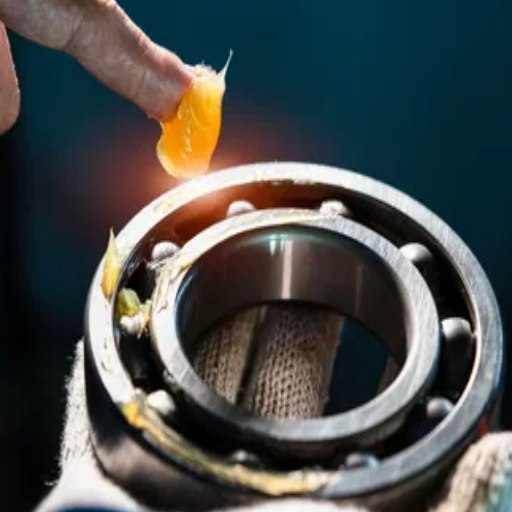
Comparison of Composition
Greases are made up of base oils, thickeners, and additives, whereas lubricants are liquids and include engine, hydraulic, and transmission oils.
|
Aspect |
Grease |
Lubricant |
|---|---|---|
|
Form |
Semi-solid |
Liquid |
|
Components |
Oil + Thickeners |
Pure Oil |
|
Enhancers |
Friction reducers |
Viscosity agents |
|
Purpose |
Bearings, joints |
Engines, hydraulics |
|
Thickness |
High |
Low |
|
Cooling |
Limited |
Excellent |
|
Upkeep |
Minimal |
Frequent |
|
Use Case |
Seals, noise control |
High-speed systems |
|
Variants |
Lithium, silicone |
Engine, hydraulic |
|
Cons |
Heat buildup |
Regular checks |
Understanding Bearing Lubrication
Because it diminishes friction and wear, bearing lubrication is a fundamental facet of machinery maintenance, ensuring smooth operational performance. The correct lubrication will provide a thin protective film between moving surfaces to prevent contact, which may lead to overheating or failure. Bearing lubricants are developed against certain operating specifications, such as load, temperature, speed, and environment, thus increasing the technicality of the selection process.
Bearings are lubricated by grease or oil. Grease is a semisolid mixture of base oil with a thickener plus additives and finds application when permanent type lubrication with minimum leakage or evaporation is required. Its use is typical in sealed systems working at low speeds, where the frequency of relubrication is kept to a minimum. Oil is typically applied to high-speed or high-load applications, favoring systems needing efficient heat dissipation for cooling purposes.
The properties such as viscosity, pour point, and thermal stability are common in selecting a lubricant that will meet a bearing’s spec requirements. For example, lubricant viscosity should be suitable for bearing operating speed: low-viscosity oils are recommended for high-speed bearings to minimize drag, whereas high-viscosity lubricants are required in bearing applications that operate under heavily loaded or slow-speed conditions to maintain an effective lubricant film.
Today, advanced bearing lubrication technologies use synthetic oils and additives specifically developed for extreme conditions, improving performance under high temperature, contamination, water ingress, among others. Monitoring systems such as vibration analysis and oil particle counting are commonly applied to measure lubricant performance, monitor contamination, and estimate the wear of lubricant and surface before a critical failure occurs.
Choosing Between Grease and Lubricant
Factors to Consider: Operating Conditions and Temperature
The choice of grease or lubricant depends on the particular operating conditions and the temperature range associated with an application. Lubricating oils with superior thermal stability perform best in high-temperature settings because they help dissipate heat and keep optimum viscosity throughout lengthy operating periods. Greases, with their thicker consistency and less mobility, are better suited for low speeds or sealing out contamination from bearings or joints.
Temperature variations also play a decisive role. Synthetic greases with a wide operating temperature range or lubricants fitted with viscosity index improvers can perform better for applications with very large temperature swings. Other influencing factors could be external: volatile contaminants, water ingress, or variations in operating pressure. For instance, machine systems exposed to very high levels of humidity can better benefit from greases with excellent water repellency; high-pressure systems with excellent lubricants that bear extreme anti-wear properties.
Having fully considered all variables, one can be assured of achieving the best potential for equipment component performance and service life and averting premature failures.
Load Requirements and Their Impact
Several key factors affect the lubrication requirements, and therefore, the choice of an appropriate lubricant would affect the overall working condition of the equipment. Loads are classified in terms of magnitude, direction, duration, and type of application. Any incompatibilities between lubrication system load-handling capabilities would lead to the failure of equipment or excessive wear or an impairment of operational efficiency.
- Static Load: Loads are those that produce constant pressure on a part without giving rise to relative motions. Lubricants with film strength and antiwear additives must be carefully selected to reduce stress on stationary systems for surface fatigue.
- Dynamic load: A load changes in value or direction during the machinery or process; the respective condition is called a dynamic load. Such conditions require a lubricant that provides an excellent load-carrying ability and offers a continuous film under varying influences.
- Shock Load: Shock loads arise from intense forces over short periods, such as impacts and vibrations. Lubricants having extreme pressure (EP) properties with good surface adhesion are needed to cushion these sudden energy pulses and shield the surfaces.
- Cyclic Load: The cyclic load arises from the periodic forcible application and release of forces. Not considering these loads may result in material fatigue and micro-pitting. Lubricants with wear-resistance mechanisms and fatigue-life enhancement properties can be applied to reduce the effects.
- Maximum Load Capacity: The Maximum load capacity threshold is the maximum stress to which a component or system is subjected. Lubricants complying with load specifications prevent breakage and ensure system performance is according to design specifications.
When the above load requirements are taken into consideration in detail and lubricant properties are matched accordingly, equipment reliability and efficiency are greatly improved.
Common Misconceptions in Lubrication
One of the main misinterpretations in lubrication is that the more, the better for a given application. This notion can cause over-lubrication, which wastes resources and creates operational hazards in and of themselves, such as increased friction conditions, heating, and seal failure. Thus, proper lubrication is a matter of considering factors such as load, speed, and operating temperature in making calculations to ascertain how much lubricant of what kind will be required for a particular job.
Another prevalent misconception is that any lubricant can solve the problem at hand; that is, all lubricants are interchangeable for any purpose. In so doing, the particular considerations that go into the lubricant formulation, to match differing working environments and machine requirements, are overlooked. Any given lubricant selected for a system may be incapable of protecting due course, may cause accelerated wear, may be incompatible in chemical nature, and may corrode components; hence, the need for due consideration of manufacturer recommendations and application considerations in achieving the desired long-term system durability and efficient operation.
Another misconception is that a lubricant, once applied, performs and one can count on it for the rest of its life. They usually do not have a lubricant monitoring program in place, and replacement is not a part of their preventive maintenance program. Lubricants lose efficacy as they get soiled, undergo temperature transitions, or get oxidized. Covering for lubricant degradation risk may be averted by regular lubricant sample testing and condition monitoring, thus making sure the system will perform according to design and save on untimely stoppage.
Maintenance Tips for Optimal Performance
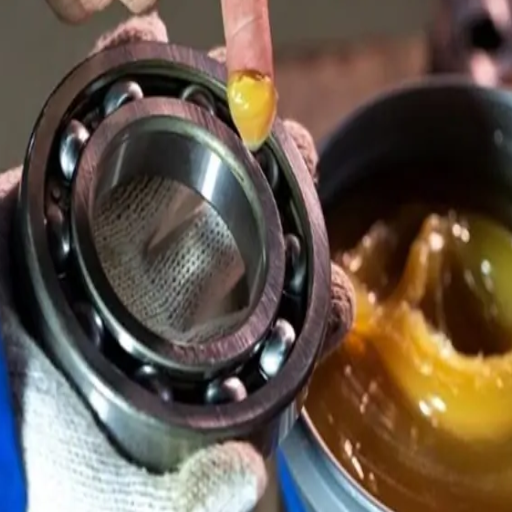
Proper Storage of Grease and Oil Lubricants
Lubricants, such as greases and oils, must be stored correctly to maintain their working characteristics, qualities, and the life of the machine. I always treat lubrication with care and ensure its storage in a clean, dry, temperature-controlled atmosphere to maintain contamination-free and prevent possible degradation. Exposure of lubricants to moisture, dust, and high or low temperatures may affect their quality, reduce working efficiency, and unwanted equipment failure. Therefore, I keep lubricants in properly sealed containers and store them on solid shelving away from the floor to minimize exposure to environmental elements.
The storage area is well organized and properly labeled to prevent any cross-contamination or misapplication of lubricants. I use different pumps, funnels, and dispensing tools for all types of lubricants and clean them after each use. Such thorough cleaning will permanently reduce the chance of introducing any foreign material or incompatible substances into these lubricants that could cause equipment wear or damage over time. I inspect containers for integrity and immediately replace any damaged packaging, ensuring the product retains its performance specifications.
Lastly, I comply with the manufacturer’s recommendations, such as shelf life and first-in, first-out stock use. An appropriate labeling system is also implemented to ensure the use of older lubricants over newer ones, which prevents lubricants from expiring and being wasted. Through these means, I can confidently assure the preservation of grease and oil lubricants’ quality, thus mitigating operational downtime and ensuring that all machinery is working at optimum efficiency.
Application Techniques for Effective Lubrication
It is vitally essential to properly lubricate machinery to maintain performance, extend the life of equipment, and keep maintenance costs low. There is a recommendation for the use of precision lubrication systems that supply the correct kind and amount of lubricant to the right areas. Either over-lubricating or the opposite, under-lubricating, would mean failure of a machine; thus, the use of tools such as automatic lubricators or ultrasound monitoring for the best distribution of lubricant should be favored.
When dealing with greases, manual greasing needs to pay great attention to bearing seals and lubrication points to avoid contamination. On the other hand, grease guns fitted with pressure indicators can allow monitoring of proper flange application that does not get into overload bearings. For centralized systems, oil flow rates and viscosities are accordingly maintained, whereas the dispensing equipment normally needs cleaning so that a lubricant is not contaminated by dispensing tools, which would have degraded its performance.
Further advanced monitoring systems and application techniques comprise vibration analysis and infrared thermography, which measure equipment lubrication condition data in real time. When monitoring and control technologies conclude that lubricant starvation, heat generation, or contamination are taking place, early corrective actions may be applied. If integrated with routine maintenance practices, this allows a huge enhancement of reliability and operational efficiency in industries.
Extending Machinery Lifespan through Proper Techniques
The proper maintenance of machines and equipment. Emphasis on techniques involving those of precision monitoring, advanced diagnostics, and timely maintenance can extend the life of machinery and equipment.
Condition-based maintenance might employ sensors to provide continuous data related to vibration, temperature, component wear, etc. Observing abnormal parameters in the real-time data may indicate potential points of failure, inducing maintenance activities before the breakdown.
Predictive maintenance, on the other hand, takes PdM to the next level with state-of-the-art technology such as machine learning algorithms or predictive analytics. These systems ingest past and real-time data to assess current equipment performance and display trends that could lead to failure. A very good example is early detection of bearing degradation through vibration frequency analysis which evidences changes in wear.
Another thing of importance is lubrication management. Automated lubrication systems are used for precise dosing of the lubricant on the basis of sensor measurements, to the prevention of excessive or insufficient lubrication, either of which can accelerate wear. Another is contamination control, such as through the use of high-efficiency filtration systems to maintain the purity of operating fluids to prevent components from being attacked by abrasive particles and corrosive elements.
If these practices are systematically carried out, these advanced techniques enhance the useful life of machines and greatly reduce downtime and operating costs. Adopting modern practices further guarantees the reliability of industrial systems so that their performance is optimized with appreciation effect on the equipment investment.
Frequently Asked Questions (FAQ)
Q: What is the primary difference between grease and lubricant?
A: The primary difference between grease and lubricant lies in their composition and application. Grease is a semi-solid lubricant that combines a base oil with a thickening agent, while lubricant generally refers to oils that provide a fluid form of lubrication. Grease is often used in applications where a longer-lasting solution is needed, whereas oil lubrication is used for high-speed rotating parts.
Q: When should I use grease versus oil for lubrication?
A: The choice between grease vs lubricant depends on the application. Grease is ideal for environments where it must adhere to surfaces and prevent harmful contaminants, while oil is better suited for high-speed applications. If you need additional lubrication and want to prevent rust, you might opt for either grease or oil, based on the specific requirements of the machinery.
Q: How does grease help in reducing friction?
A: Grease helps reduce friction by forming a protective layer on bearing surfaces, which minimizes direct contact between moving parts. This protective layer not only reduces wear but also helps to prevent rust and corrosion, extending the life of the machinery.
Q: What factors affect the choice between grease and oil lubrication?
A: Factors include the base oil viscosity, the operating temperature, the speed of the application, and the environment in which the machinery operates. For example, high-viscosity greases may be used for heavy loads, while lower viscosity oils are better for high-speed applications.
Q: Are there specific industries where grease is preferred over oil?
A: Yes, the food industry often prefers grease for lubrication due to its ability to stay in place and resist being washed away. Grease is also commonly used in automotive applications, where it must adhere to rotating parts and withstand high temperatures.
Q: Can grease be used in oil-lubricated systems?
A: While it is generally not recommended to mix grease with oil, some specially formulated greases can be used in oil-lubricated systems. However, it is important to ensure compatibility to avoid adverse effects on lubrication performance.
Q: What types of additives are commonly found in grease?
A: Greases often contain solid additives such as Teflon and lithium-based greases to enhance performance. These additives help improve the grease’s ability to adhere to surfaces and provide better lubrication in demanding conditions.
Q: How can I determine the right amount of grease to use?
A: The right amount of grease depends on the specific application and the manufacturer’s recommendations. Generally, over-greasing can lead to excess pressure and leakage, while under-greasing can result in inadequate lubrication. It’s essential to follow guidelines to ensure optimal performance.
Q: Is grease better than oil for all applications?
A: No, grease is not necessarily better than oil for all applications. Each has its advantages based on the specific needs of the machinery. Grease lasts longer and adheres well, making it suitable for certain applications, while oil provides better flow and is ideal for high-speed scenarios. Understanding the difference between oil and grease is crucial for effective lubrication management.
UCTH213-40J-300 with Setscrew(inch)
CNSORDERNO: Normal-duty(2)
TOGN: UCTH213-40J-300
SDI: B-R1/8
SD: 2 1/2
UCTH212-39J-300 with Setscrew(inch)
CNSORDERNO: Normal-duty(2)
TOGN: UCTH212-39J-300
SDI: B-R1/8
SD: 2 7/16
UCTH212-38J-300 with Setscrew(inch)
CNSORDERNO: Normal-duty(2)
TOGN: UCTH212-38J-300
SDI: B-R1/8
SD: 2 3/8
UCTH212-36J-300 with Setscrew(inch)
CNSORDERNO: Normal-duty(2)
TOGN: UCTH212-36J-300
SDI: B-R1/8
SD: 2 1/4
UCTH211-35J-300 with Setscrew(inch)
CNSORDERNO: Normal-duty(2)
TOGN: UCTH211-35J-300
SDI: B-R1/8
SD: 2 3/16
UCTH211-34J-300 with Setscrew(inch)
CNSORDERNO: Normal-duty(2)
TOGN: UCTH211-34J-300
SDI: B-R1/8
SD: 2 1/8









